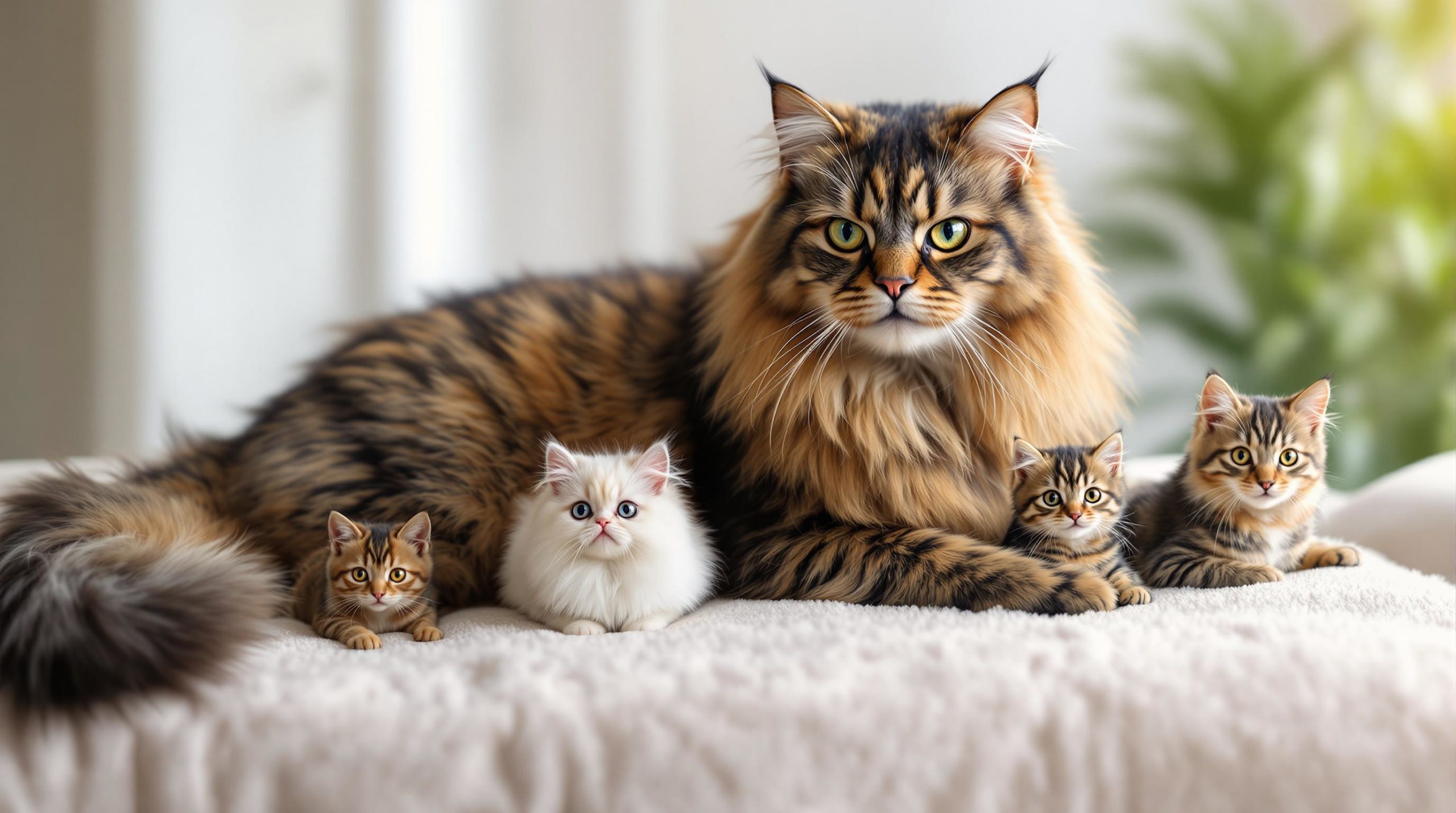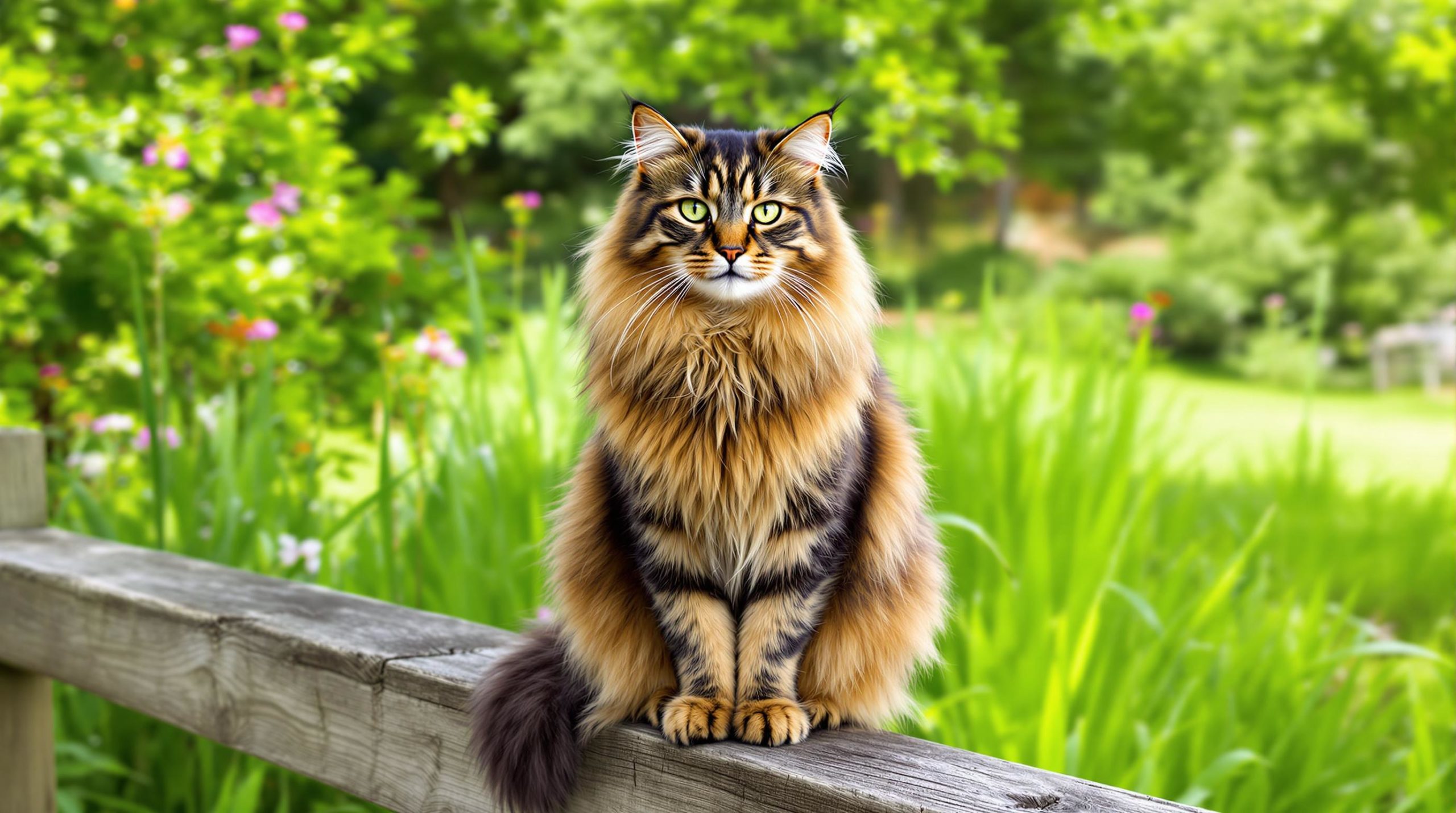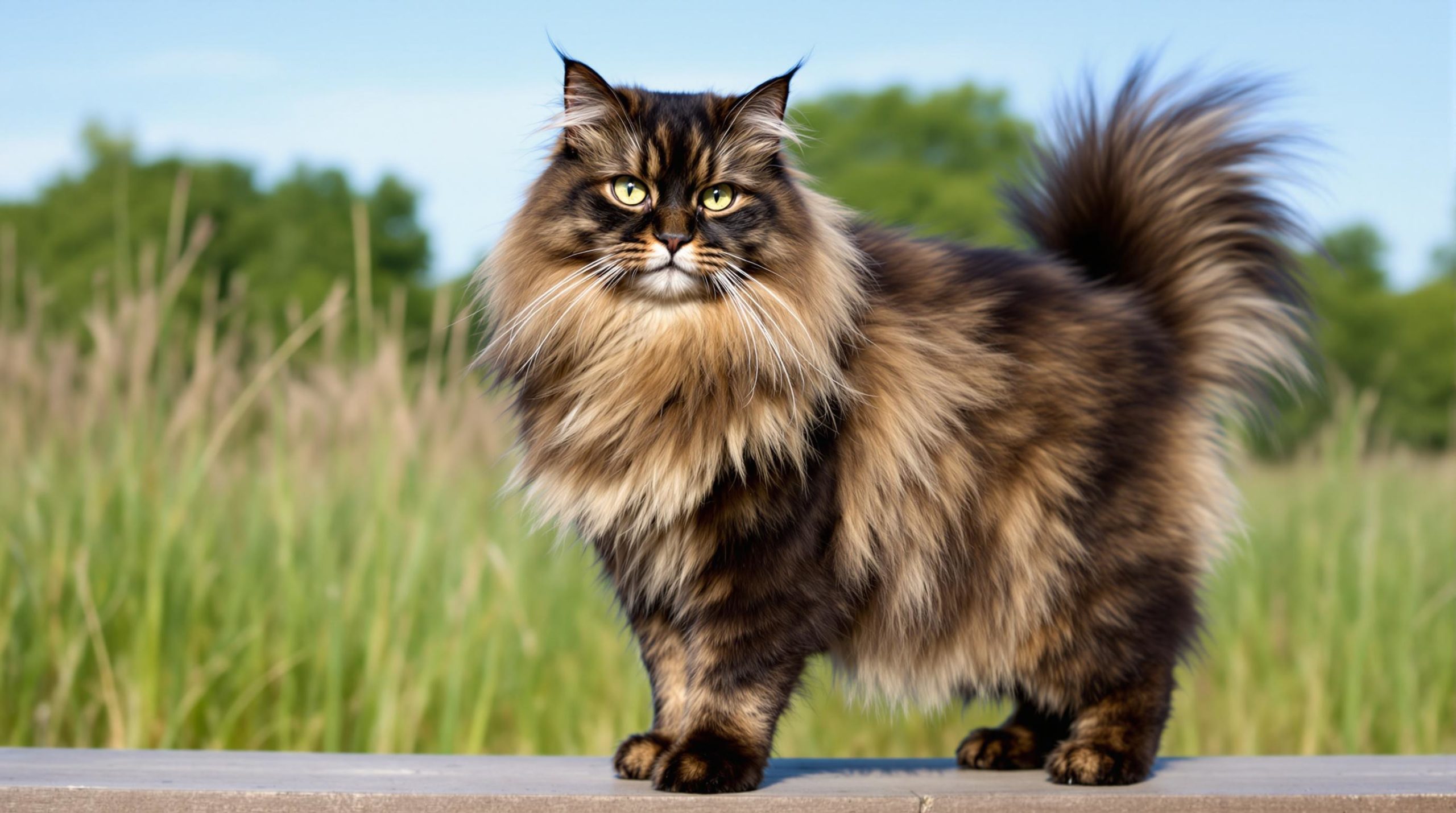understanding the size of maine coon cats: do they all grow large?

When you picture a Maine Coon, does a colossal, majestic feline immediately come to mind? While this breed is famous for its grand stature, the reality of their size is as diverse as their personalities. Maine Coons are often celebrated as the “gentle giants” of the cat world, but the question remains—do they all grow large, or is their size more of a spectrum? Understanding the factors influencing Maine Coon size not only satisfies curiosity but also helps owners anticipate their pet’s development and needs.
Exploring the Typical Maine Coon Size and Growth Patterns
Maine Coons are among the largest domestic cat breeds, characterized by long bodies, muscular frames, and thick, bushy tails. They have an extraordinary growth process compared to typical house cats.
The average male Maine Coon usually weighs between 18 to 22 pounds, with some exceptional individuals reaching up to 24 pounds and beyond. Females, though generally smaller, still boast a substantial weight range of 12 to 15 pounds. In terms of dimensions, adults fall between 19 and 40 inches in length, tail included, and stand roughly 8 to 16 inches tall at the shoulder.
This wide range in size is a result of both genetics and environmental factors. Unlike many cat breeds, Maine Coons have a protracted growth period. While most cats reach their adult size within their first year, Maine Coons take between 3 to 5 years to fully mature. This slow growth allows their skeletal and muscular systems to develop robustly over time.
Here’s a detailed size comparison:
| Attribute | Male Maine Coon | Female Maine Coon |
|---|---|---|
| Length (Including Tail) | 19 – 40 inches | 19 – 40 inches |
| Height | 10 – 16 inches | 8 – 14 inches |
| Weight | 18 – 22 lbs | 12 – 15 lbs |
The overlapping sizes in length indicate that even female Maine Coons can reach dimensions rivaling some males, but males generally grow heavier and taller.
Factors that impact the Maine Coon’s final size include:
- Genetics: The size inheritance from parents is a major determinant.
- Diet: Proper nutrition, especially protein-rich food from brands like Chewy or Purina, supports healthy muscular growth.
- Health: Maintaining good health through regular check-ups and preventive care with companies like Bayer is crucial for optimal growth.

Genetics and Evolution: Why Are Maine Coons Naturally Large?
The remarkable size of Maine Coons isn’t a mere coincidence but the product of a fascinating blend of genetics and natural selection. Their lineage may include ancestors like the Norwegian Forest Cat, whose notable size influences Maine Coons’ large frames today.
Early Maine Coons evolved in the cold, harsh climate of North America’s Northeast. This environment demanded a cat with traits that favored survival: strong bones, wide paws for walking on snow, thick fur for warmth, and muscular builds for hunting. Over many generations, this natural selection favored bigger, healthier cats that could endure Maine’s rugged seasons.
Selective breeding by enthusiasts and professional breeders has also maintained and enhanced the Maine Coon’s distinct size and charisma. By focusing on cats that grow large and maintain good health, breeders have perpetuated the breed’s signature stature and temperament.
- Wide paws: Help with snowwalking and balance.
- Thick fur and tufts: Protect against freezing temperatures.
- Bushy tails: Provide warmth when curled during rest.
- Muscular frame: Supports agility and endurance.
- Gene pool health: Ensures vigorous, hardy cats less prone to disease.
Natural and selective forces together explain why a large physique is the norm, yet size can still vary widely across individuals depending on how these factors converge.
The Impact of Diet, Health, and Lifestyle on Maine Coon Cat Size
While genetics set the blueprint for size, nutrition and health play critical roles in fulfilling a Maine Coon’s size potential. These cats have high energy needs due to their size and muscularity, requiring a diet richer in protein and certain nutrients than many standard cats.
High-quality cat foods such as Royal Canin, Hill’s Science Diet, or carefully chosen options from PetSmart are excellent to support a Maine Coon’s dietary requirements. They help promote healthy muscle growth and maintain vitality during their lengthy growth phase.
Common health issues like hip dysplasia, spinal muscular atrophy, or hypertrophic cardiomyopathy can affect growth and quality of life if not promptly addressed, making regular vet visits essential. Experts and enthusiasts often recommend preventive screening and early intervention strategies to safeguard health, as detailed in resources like Maine Coon Health Risks.
Lifestyle factors such as ample playtime, climbing opportunities with sturdy structures like those from PetFusion or Frisco, and safe, enriching environments also encourage healthy development.
- Feed high-protein, breed-appropriate diets consistently.
- Spend time enriching play and exercise to support muscle growth.
- Schedule regular check-ups to monitor and avert breed-specific ailments.
- Adopt grooming and ear care routines to avoid common maintenance issues.
Maintaining such care regimens contributes significantly to the Maine Coon’s ability to reach and sustain an impressive size healthily.
Dispelling Common Myths About Maine Coon Size and Heritage
Many urban legends surround the Maine Coon’s size and origins, often fueled by their mysterious appearance and majestic presence. Three popular myths help illustrate how folklore and misconception surround this breed.
- Myth 1: Maine Coons Are Part Raccoon
Because of their bushy tails and tabby markings, some once believed Maine Coons were crossbred with raccoons. This has been scientifically disproven but continues to captivate imaginations. - Myth 2: Marie Antoinette’s Cats Founded the Breed
This tale suggests that long-haired cats smuggled out of France during the revolution bred with local cats in Maine. While romantic, there’s little evidence to confirm this story, especially given the size discrepancy between Turkish Angora cats and Maine Coons. - Myth 3: Ship Cats Are Progenitors of the Breed
Ships often carried cats for rodent control. The theory goes that these long-haired cats, possibly Norwegian Forest Cats, interbred with local short-haired cats, giving rise to Maine Coons.
Understanding these myths helps appreciate the breed’s true natural and selective breeding history. For those seeking to dive deeper, comparison articles such as Maine Coon vs Norwegian Forest Cat Size provide intriguing insights.
With the mysteries often dispelled, the focus shifts back to what truly shapes these majestic cats: careful breeding combined with genetics and care.

How Male and Female Maine Coons Differ in Size and Growth Timing
Though size overlap exists, sex differences in Maine Coon cats are notable. Male Maine Coons typically grow larger and carry more weight than females. However, some females can surpass smaller males, particularly when boosted by favorable genetics and environment.
Maine Coon kittens rapidly outgrow other breeds in early months, often doubling or tripling their birth weight within weeks. Key growth spurts occur around:
- 4 to 6 months
- 8 to 10 months
- 12 to 18 months
After these bursts, growth gradually slows and often continues until the cat is between 3 to 5 years old. This extended maturation is unusual for cats but central to how Maine Coons develop their legendary size over time.
| Growth Milestone | Age Range | Description |
|---|---|---|
| Rapid Initial Growth | Birth – 6 months | Weight doubles or triples, physical development accelerates. |
| Growth Spurts | 6 – 18 months | Multiple spurts with significant increases in height and weight. |
| Final Maturation | 3 – 5 years | Skeletal and muscular growth completes, reaching full size. |
Understanding these stages helps owners tailor nutrition and care across their Maine Coon’s life, ensuring support throughout their unique development.
Frequently Asked Questions About Maine Coon Size
- Do all Maine Coons grow to be giants?
Not all Maine Coons reach the upper extremes of size. While genetics set the potential, individual diets, health, and environment cause size variations. - When do Maine Coons stop growing?
Typically, they grow rapidly for the first year but continue a slow growth phase until 3-5 years old. - Can diet affect how big my Maine Coon will get?
Absolutely! A high-protein, balanced diet supports healthy growth. Brands like Purina, Royal Canin, and Hill’s Science Diet offer formulated options for Maine Coons. - Are male Maine Coons always bigger than females?
Generally, males are larger, but individual size varies; some females can outweigh smaller males. - Does slow growth mean my Maine Coon is unhealthy?
Not necessarily. Slow, steady growth is typical for this breed and allows proper musculoskeletal development.